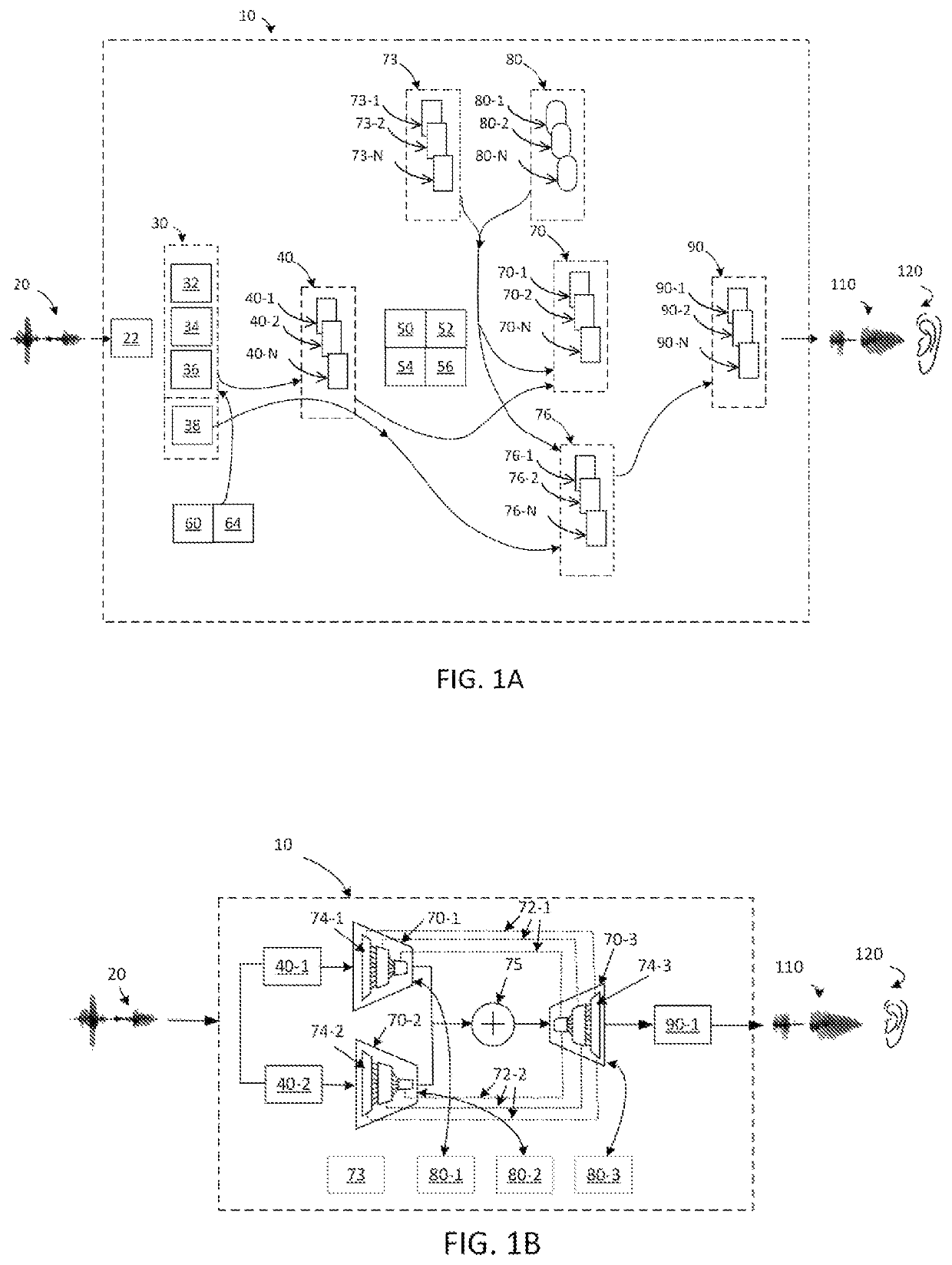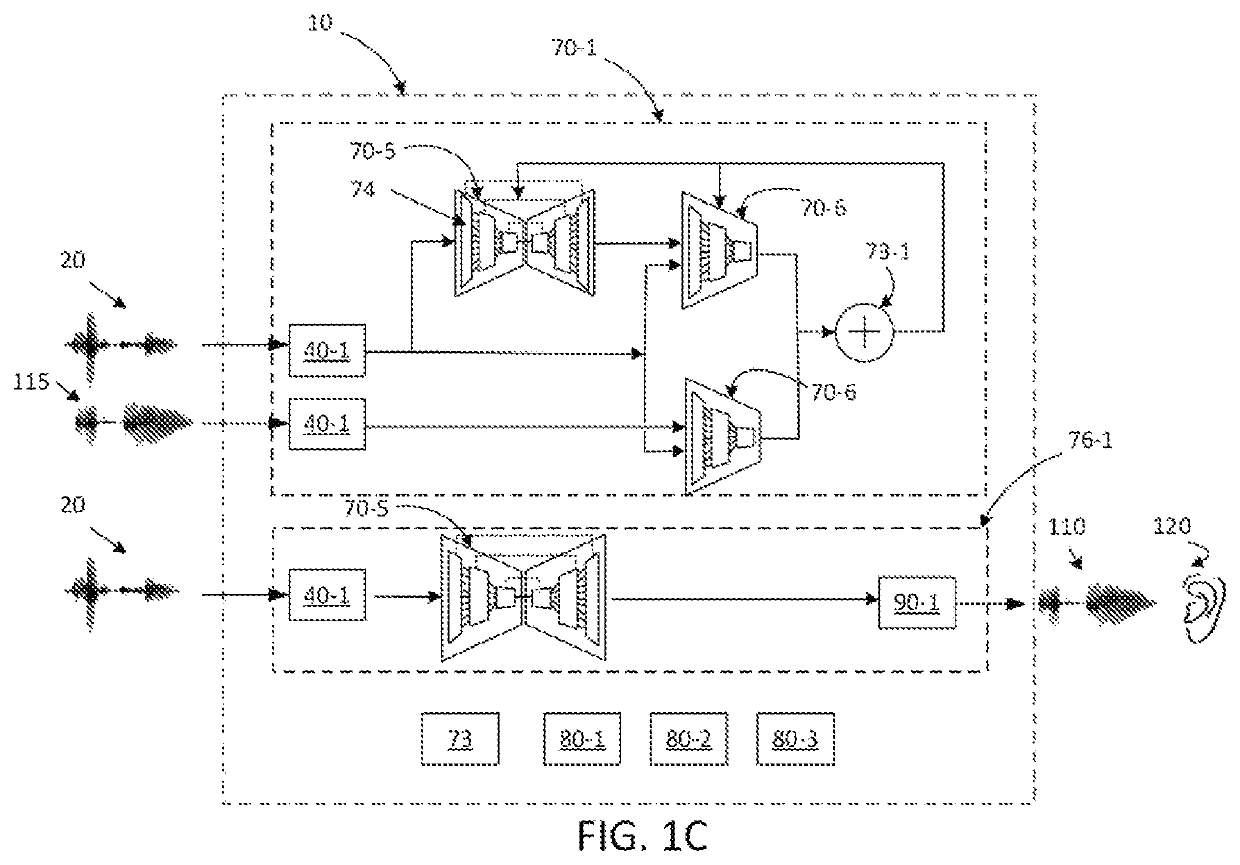Methods and systems implementing language-trainable computer-assisted hearing aids
a computer-assistant and hearing aid technology, applied in the field of hearing aids, can solve the problems of debilitating symptoms, hearing loss does not completely address the problem, and the elderly's hearing loss becomes a more serious problem, so as to enhance the output speech quality and improve the processing of speech frequency spectrum
- Summary
- Abstract
- Description
- Claims
- Application Information
AI Technical Summary
Benefits of technology
Problems solved by technology
Method used
Image
Examples
Embodiment Construction
[0033]As noted, embodiments of the present invention provide analytical methods and tools to implement a hearing aid device tailored to the speech hearing ability of a specific listener or user of the hearing aid. As used herein, the terms “voice data”, “speech” and “audio data” may be used interchangeably as relates to the understanding of spoken words by a listener. Unless noted otherwise, the terms “understanding” or “intelligibility” or “clearer” may be used interchangeably herein with reference to improving a user's ability to discern and preferably understand the meaning of speech. Unless explicitly noted or clear from the context, the words “translating”, “transforming”, “shifting”, or “cleaning up” may be used interchangeably to denote changing speech from a first form to a second form that is more intelligible to the listener. The words “generate” or “synthesize” also may be used interchangeably to denote the voice sound created by such transformation. Additionally, in diff...
PUM
 Login to View More
Login to View More Abstract
Description
Claims
Application Information
 Login to View More
Login to View More - R&D
- Intellectual Property
- Life Sciences
- Materials
- Tech Scout
- Unparalleled Data Quality
- Higher Quality Content
- 60% Fewer Hallucinations
Browse by: Latest US Patents, China's latest patents, Technical Efficacy Thesaurus, Application Domain, Technology Topic, Popular Technical Reports.
© 2025 PatSnap. All rights reserved.Legal|Privacy policy|Modern Slavery Act Transparency Statement|Sitemap|About US| Contact US: help@patsnap.com



